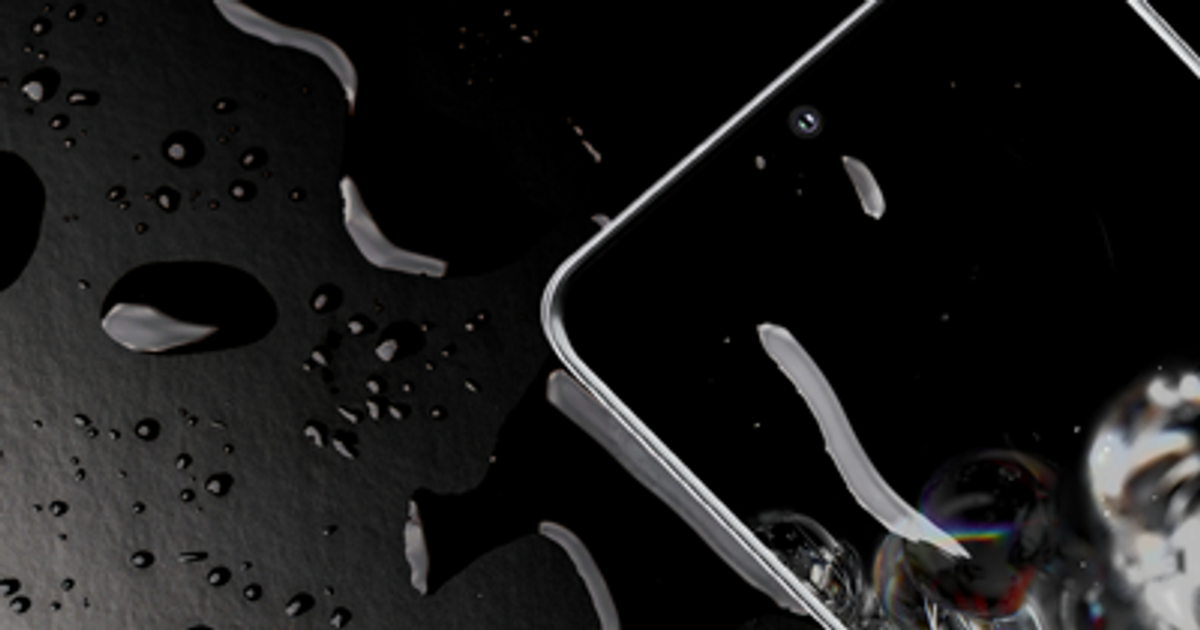It can be hard to know if your phone is water damaged or not. In some cases, it will be fairly obvious - maybe you dropped it down the toilet or were using it in a swimming pool. If things start to go wrong afterwards, then you probably know why.
But there are plenty of times when it might not be as clear-cut as this. Many phones now have IP67 or IP68 water resistance ratings. This means, in theory at least, that your phone is able to resist water ingress at a depth of 1 metre for up to 30 minutes. So using it in the rain or spilling a drink on it, surely wouldn't be enough to cause water damage, right?
There are a few different ways you can tell whether or not water damage is affecting your handset. Some are obvious, and some take a little more detective work. But here's what you need to know.
How To Know If Your Phone Is Water Damaged
You will probably suspect water damage if you notice your phone is starting to misbehave, shortly after it has come into contact with liquid. And for many of us, our phones never leave our side, so we will know whether a spillage has occurred.
But there can also be times when any contact with water was minimal, or you quickly wiped your phone down. And it may therefore be a surprise if your phone isn't working properly sometime later. So here's how you can tell whether that problem is caused by water damage, or whether you need to look for an alternate cause.
Look For Obvious Signs Of Damage
A visual inspection may immediately give the game away. Obvious signs include things such as moisture under the screen. This will be pretty clear, and would usually have required your phone to have been submerged for a while, in order for the water to get in.
Check the phone edges and buttons for any signs of warping. And similarly, look at all your ports for any visual signs of damage. This might be rust, corrosion, discolouration, or some connectors may have come loose.
Even if you conduct a visual inspection, the phone may still look absolutely fine on the outside. This is why it's always worth looking for the LDI - liquid damage indicator.
Check The Liquid Damage Indicator
The liquid damage indicator (or liquid contact indicator on iPhone) is, as the name suggests, a strip that changes colour when it comes into contact with liquid. This is normally housed internally. If water has managed to penetrate deep enough to reach the LDI, then it's a fairly strong bet that it will have reached other internal components as well.
This is one of the first things a repair centre will check when they receive a phone for repair. It will almost always void your warranty as well. So if your phone is in need of repair, you can check the LDI. If it indicates water damage, you can then prepare yourself to either pay a repair charge or make a claim through your insurance.
Liquid Contact Indicator on iPhone
On an iPhone, any handset built post-2006 has an LCI that is visible from the outside of the device. So you won't need to pull your phone apart to get to it. It will normally be white or silver, but once it has been exposed to liquid, it will turn red. This can also change colour if you are in a particularly humid environment. But this would be quite extreme.
Usually, you can see the LCI by removing the SIM tray and having a look inside the slot for the tray. You may need a torch for this.
- Read More: How To Check Battery Health On Android
Liquid Damage Indicator on Android Devices
On an Android device, the LDI will normally be located inside the SIM card slot, or the SD card slot. On some older devices or those with a removable battery, it might be on the battery itself, or underneath it on the rear of the phone.
As with an iPhone, these will usually be white, occasionally with some pink or purple crosses on, depending on the manufacturer. And as with iPhones, once they have been exposed to water, they will turn pink or red.
Once again, remove the SIm or SD card tray, and have a look inside the slot. A torch may make it easier to spot if you are having difficulty seeing it.
- Read More: How To Check If Your Phone Has Virus
What To Do If Your Phone Is Water Damaged?
While there are plenty of remedies suggested by the internet, such as placing your phone in a bowl of rice, it's questionable how effective these actually are. It's likely that whatever you do, your phone is going to need repair.
As we mentioned earlier, water damage will normally not be covered by your warranty, so the chances are you will need to pay for a repair. You can usually arrange this through your network provider. Alternatively, you can often go directly to the manufacturer of the device and arrange a repair through them. Finally, you might have a local mobile phone repair shop that can offer help.
We certainly wouldn't recommend that you ignore the problem and hope it goes away.
Explore new topics and discover content that's right for you!





